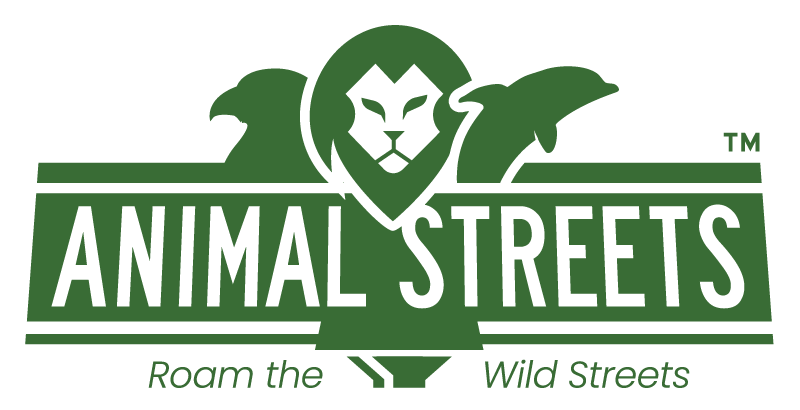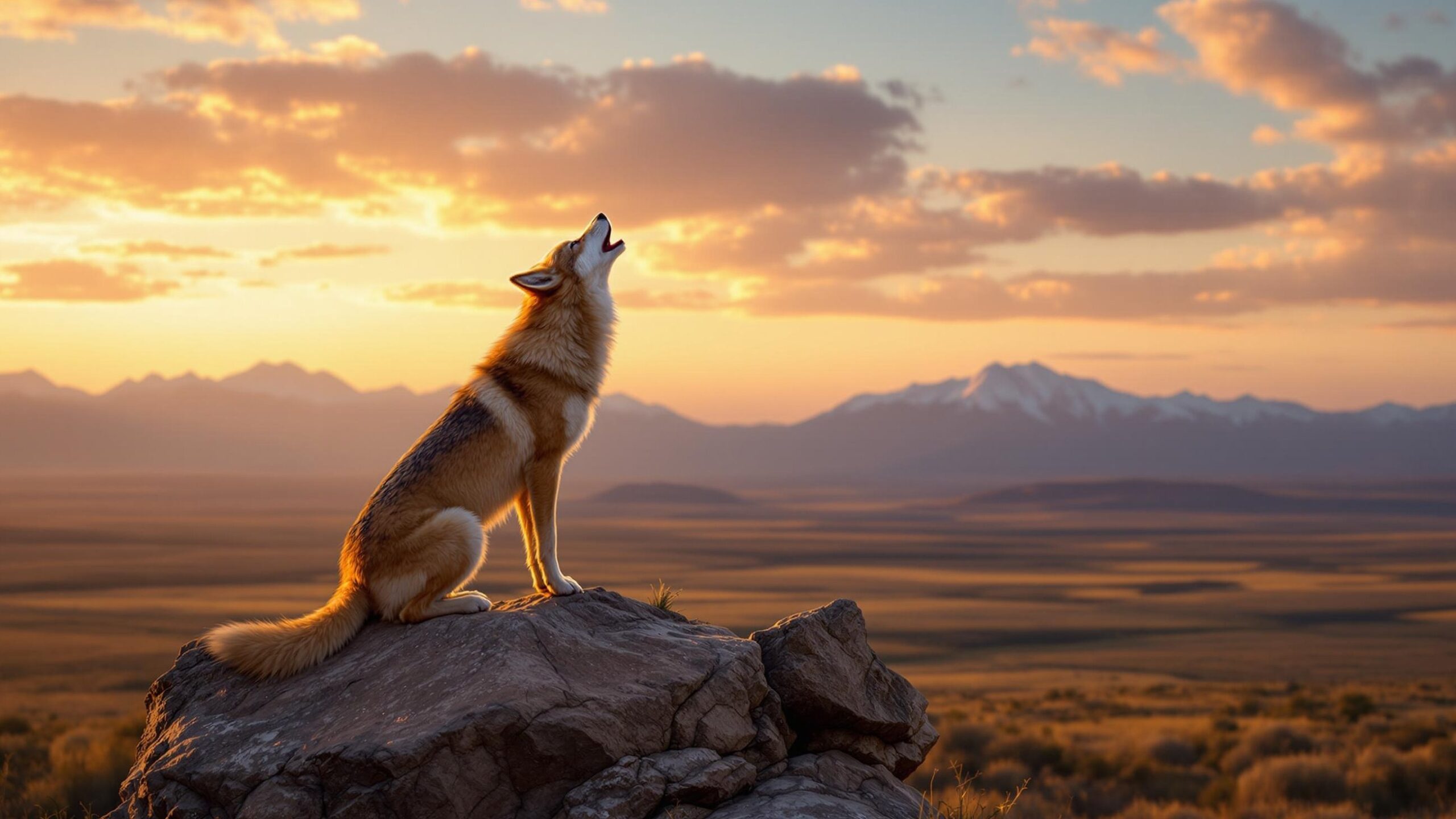Coyotes: The Resilient Tricksters of the American Wild
As dawn breaks across the plains, a familiar, haunting chorus rises—a blend of yips, howls, and barks that echoes like a wild lullaby. The sound belongs to the coyote, a creature of myth, mystery, and survival. Sleek, cunning, and endlessly adaptable, coyotes are woven into the very fabric of North America’s wild identity. They are at home in the deserts of Arizona, the snow-covered fields of Canada, the urban back alleys of Chicago, and even the edges of Central Park in New York City. This incredible range is a testament to the coyote’s brilliance—not just as a hunter, but as a survivor and opportunist.
Known scientifically as Canis latrans, meaning “barking dog,” the coyote is a member of the Canidae family, which also includes wolves, foxes, and domestic dogs. Often misunderstood and underestimated, coyotes are neither purely predators nor purely scavengers. They are ecological shapeshifters, intelligent problem solvers, and cultural icons. To understand coyotes is to explore a creature that walks the boundary between the wild and the human world—and thrives on that very edge.
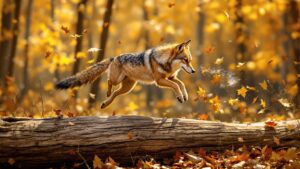
Eastern Coyote
Eastern Coyote: The Adaptive Predator of the East Scientific Name: Canis latrans var. In the forests, fields, and even the suburban sprawl of eastern North America, a quiet and clever predator has staked its claim. The Eastern Coyote, Canis latrans var., is a creature of resilience, intelligence, and controversy. Neither fully wolf nor purely coyote, this hybrid species has adapted remarkably to landscapes shaped by human activity, thriving in places
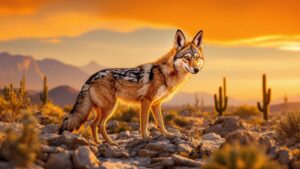
Mexican Coyote
Mexican Coyote: The Desert’s Clever Survivor In the wild terrains of Mexico, from sun-scorched deserts to lush mountain forests, thrives one of North America’s most adaptable and cunning carnivores—the Mexican Coyote (Canis latrans cagottis). A subspecies of the broader coyote species (Canis latrans), the Mexican Coyote is a example of nature’s ingenuity, surviving and thriving in some of the most challenging and varied landscapes. Known for its intelligence, resourcefulness, and
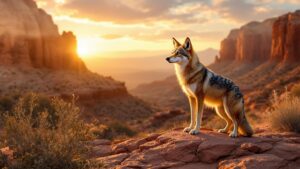
Western Coyote
Western Coyote: The Adaptive Trickster of the American West Scientific Name: Canis latrans Slicing through the stillness of the desert night or echoing from the foothills of a sun-scorched canyon, the unmistakable howls of the Western Coyote signal the presence of one of North America’s most iconic—and misunderstood—creatures. With its keen intelligence, sharp senses, and extraordinary adaptability, the Canis latrans, or Western Coyote, thrives in landscapes where other predators falter.
The Anatomy of Adaptation: Biological Characteristics and Ecological Importance
Coyotes are medium-sized canids, typically weighing between 20 and 50 pounds, with males larger than females. Their coats are usually tawny gray or reddish-brown, with white underbellies, bushy tails tipped in black, and pointed ears that swivel with alertness. Though often mistaken for small wolves, coyotes are more slender and agile, with a high, springy gait that is unmistakable in motion.
Their intelligence is as remarkable as their physiology. Coyotes are highly social animals with complex communication systems involving vocalizations, body language, scent marking, and even facial expressions. Their iconic howls are used to rally pack members, mark territory, and signal alarm. In fact, a single coyote can mimic multiple individuals howling at once, creating the illusion of a much larger group.
Coyotes are also essential players in their ecosystems. As mesopredators, they help regulate populations of rabbits, rodents, and even deer fawns, maintaining ecological balance. They indirectly support plant life by managing herbivore numbers and reduce disease by consuming carrion. In ecosystems where apex predators like wolves and cougars have disappeared, coyotes often rise to fill the void—an adaptive response that reshapes the entire food web.
Western Coyotes: Masters of the Open Range
The western United States is the coyote’s ancestral home, where open plains, deserts, and sagebrush steppe offer both prey and space. Here, coyotes exhibit many of their most iconic behaviors—lone howling beneath the stars, silent stalking through golden grass, and denning in rock outcroppings or shallow burrows. Western coyotes typically hunt solo or in mated pairs, preying on jackrabbits, ground squirrels, prairie dogs, and small birds. In leaner seasons, they scavenge and expand their diet to include fruit, insects, and even fish. Their lean build and long legs allow for efficient movement across wide terrain, and their ability to scent prey from long distances helps them succeed in sparse landscapes.
Coyotes in these regions often maintain long-standing territories and form monogamous pairs that may last a lifetime. They raise their pups communally, with older siblings helping to feed and protect the young. The western coyote is the blueprint from which all other regional adaptations have evolved—a model of endurance in a land of extremes.
Eastern Coyotes: Bigger, Bolder, and Blending In
In the 20th century, as wolves were extirpated from much of the eastern United States and coyotes were hunted in the west, a fascinating shift occurred. Coyotes expanded eastward, eventually colonizing the entire eastern seaboard. But these weren’t the same coyotes of the west—along the way, they hybridized with gray wolves and domestic dogs, creating what scientists now call the Eastern coyote or coywolf.
These coyotes are larger—often 10 to 20 pounds heavier than their western cousins—and exhibit traits borrowed from their wolf ancestors: broader skulls, stronger jaws, and a greater willingness to hunt larger prey. While still omnivorous, Eastern coyotes are more likely to take down deer, especially fawns and injured adults. They are also more tolerant of forested environments, using wooded corridors and abandoned farmland to travel and hunt.
Eastern coyotes thrive in suburban neighborhoods and rural farmland alike, often denning in forest edges or even under sheds. Though they remain wary of humans, their growing comfort with urbanization presents both an opportunity for ecological education and a challenge for wildlife managers tasked with resolving human-wildlife conflicts.
Urban Coyotes: Ghosts of the Cityscape
Perhaps the most astonishing expression of coyote adaptability is their seamless integration into urban environments. From Los Angeles to Toronto, and from Phoenix to New York City, coyotes have quietly become permanent fixtures in the heart of modern civilization. These urban coyotes are masters of stealth and timing, often traveling by night, using green belts, storm drains, and alleyways to navigate the concrete jungle.
Urban coyotes eat a surprisingly diverse diet: rats, squirrels, pet food, garbage, compost, fallen fruit, and even feral cats. Yet they retain their natural wariness, rarely seen and almost never heard by the people living just yards away. Trail cameras reveal a hidden world of coyote activity in parks, cemeteries, industrial lots, and even city rooftops.
Cities have responded to urban coyotes with a mix of fascination and fear. Education campaigns encourage residents to secure trash, keep pets indoors, and avoid feeding wildlife. In many areas, non-lethal management strategies—including hazing and habitat modification—help reduce negative encounters while preserving the coyote’s valuable ecological role in rodent control.
Coyotes of the Desert: Survival Artists of the Southwest
In the American Southwest, coyotes thrive in scorching deserts and arid grasslands where food is scarce and conditions are harsh. These desert coyotes are lean, short-furred, and incredibly resourceful, often traveling long distances in search of water and food. They take full advantage of seasonal fruiting plants like prickly pear and mesquite beans and hunt lizards, snakes, birds, and small mammals that have also adapted to desert life. Water is found wherever possible—from cactus pulp to road puddles—and dens are often located in shaded canyons or beneath thick vegetation. These coyotes are among the most vocal, their yips and howls echoing across arroyos and dry riverbeds at twilight, giving voice to a landscape defined by silence and sun.
Their ability to survive—and even flourish—where few large predators can highlights the coyote’s unmatched resilience. In the desert, they are not just predators, but symbols of ingenuity and wild freedom.
Coyotes of the Northern Wilderness: Cold Climate Strategists
In the colder climates of Canada, Alaska, and the northern U.S., coyotes exhibit different behaviors suited to snow, cold, and longer winters. Here, their coats thicken into luxurious, warm pelts that once made them targets for the fur trade. Their diet shifts to include more carrion during the harshest months, and their hunting focuses on snowshoe hares, voles, and the occasional deer weakened by winter. These northern coyotes often travel in small family groups and may cache food beneath the snow or in brush piles. They are more cautious around wolves—who are both competitors and predators—and may be forced to occupy marginal spaces or become more nocturnal when wolves are active. Despite these challenges, northern coyotes demonstrate incredible spatial awareness and environmental sensitivity. They adjust their range size and activity based on snow depth, prey density, and weather patterns. As the climate shifts, coyotes are increasingly moving into territories once considered too extreme for them, prompting fresh ecological questions.
Coyotes and the Human Imagination: Tricksters, Teachers, and Tensions
Long before European settlers arrived, coyotes were already embedded in the stories of Indigenous peoples across North America. In many Native American traditions, the coyote is the trickster—a clever, mischievous figure who creates, disrupts, deceives, and enlightens. Sometimes a fool, sometimes a hero, always a survivor. This duality captures the essence of the animal itself: resourceful, unpredictable, and deeply connected to the natural world.
In Mexican folklore, coyotes are associated with song, the moon, and transformation. In the modern American consciousness, they are sometimes demonized as livestock killers or disease vectors, but also increasingly respected as symbols of wilderness persistence in a human-altered world. Hollywood and literature have alternately vilified and romanticized coyotes. From Wile E. Coyote’s endless chase to the haunting beauty of their night chorus in desert Westerns, the coyote continues to capture the cultural imagination. And in science, they are rapidly becoming a model for studying urban wildlife dynamics, hybridization, and species resilience.
Coyote Conflicts and Coexistence: Challenges of Living Side-by-Side
As coyotes expand into human spaces, conflict is inevitable. Livestock predation, threats to pets, roadkill incidents, and sightings near schools or neighborhoods often provoke fear and calls for removal. However, studies show that widespread culling often fails to reduce coyote populations—in fact, it can increase them. Removing dominant adults can trigger increased breeding and migration into vacated territories. Instead, coexistence is now the goal of forward-thinking wildlife management. Public education, non-lethal deterrents, and strategic fencing help reduce conflict. Urban areas like Denver, Chicago, and Portland have pioneered “coyote coexistence” plans that rely on community participation and science-backed solutions. Coyotes are not going away. Their adaptability, intelligence, and reproductive capacity ensure their future presence in virtually every landscape. The question is no longer whether we can get rid of them—but whether we can live with them, and learn from them.
Coyotes in Science: Research and Conservation Frontiers
Coyote research is booming, with scientists investigating everything from vocalizations to genetics to ecological roles. GPS collaring and remote cameras are mapping urban travel patterns and territorial boundaries. Acoustic monitoring is uncovering the complexity of coyote communication and its social dynamics. Genetic studies reveal surprising levels of wolf and domestic dog DNA in eastern populations, offering insights into hybridization and evolution. Conservationists focus not only on population management, but also on habitat connectivity and public perception. As coyotes adapt to climate change, urbanization, and ecosystem shifts, they serve as living case studies in resilience, flexibility, and biological innovation. Some regions, particularly where coyotes are hunted as pests or bountied, lack comprehensive data and oversight. National and international wildlife organizations are working to standardize monitoring, promote ethical management, and preserve ecological integrity while respecting human concerns.
Learning from the Wild Heart of the Coyote
To follow the coyote is to walk a path between worlds—between forest and field, wilderness and city, myth and science. It is a journey that reveals nature’s raw edge and its creative brilliance. The coyote is not just a survivor—it is an innovator, a communicator, a mirror of the land it inhabits. Every howl under a full moon, every set of tracks in a snowy backyard, every glint of amber eyes in headlights at dusk tells a story of adaptation and presence. Coyotes challenge us to rethink our role in the environment—not as masters of nature, but as co-inhabitants in a living, shifting world. Whether you admire them for their cunning, study them for their biology, or encounter them in your neighborhood, coyotes offer something rare in the animal kingdom: a lesson in how to endure, evolve, and coexist. Now is the time to explore further. Learn about coyote family structures. Understand how they’re reshaping cities. Discover the science of their howls and the stories of their survival. The trail is winding, wild, and filled with discovery. And at the end of it, the coyote—clever, resilient, and untamed—is still running ahead.
